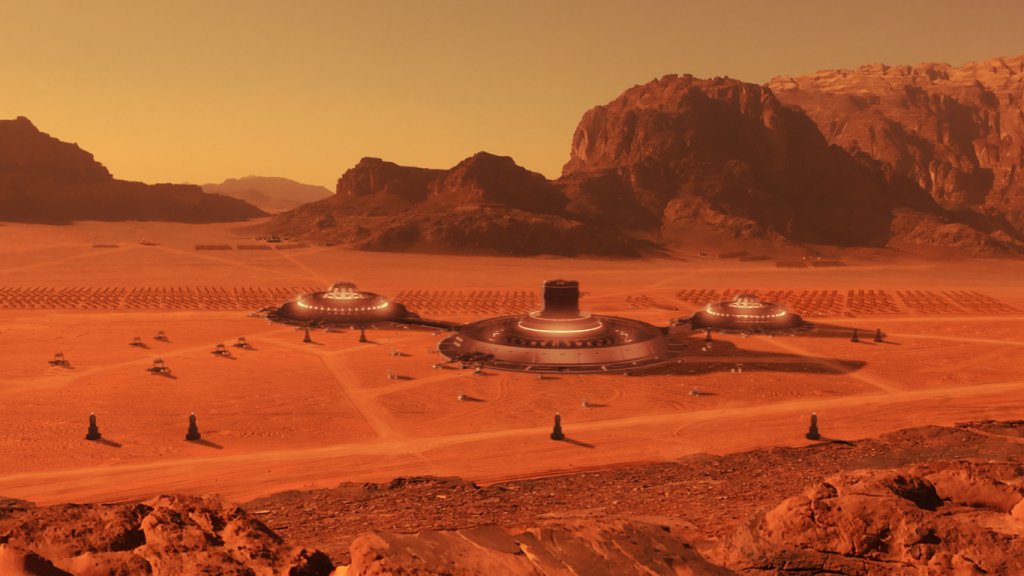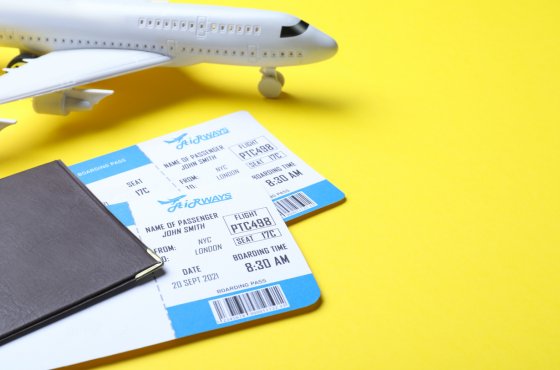Four people will spend a year locked up in a small house in Texas: this is preparation for flights to Mars
Red sand shimmers under the boots of the crew members. In the distance, a rocky mountain range rises from the Martian horizon. A thin layer of red dust coats the solar panels and equipment needed for the year-long mission. This landscape is not actually on the Red Planet, but just nearby - at the NASA Space Center in Houston, Texas, in a large white warehouse next to a golf course and on a trolley route for tourists and school groups. What kind of Martian base is this and why is it needed, the publication said The Guardian.

Photo: IStock
Starting this June, four volunteer test subjects will spend a year locked up pretending to live on Mars.
NASA researchers are doing everything possible to bring them as close as possible to the realistic conditions of their habitat on the Red Planet. This is done in order to study the impact that a year of isolation with limited resources has on human health.
“As we move from low Earth orbit, from the Moon to Mars, we will have much more resource constraints than the International Space Station, and we will be much further away from Earth or any help from Earth,” said Dr. Grace Douglas, Principal Investigator on Crew Health Effectiveness, or Chapea.
The four crew members will live in a small apartment building that was built using a huge 3D printer to simulate how NASA can create structures on the surface of Mars from Martian soil. They will conduct experiments, grow food and exercise, and be regularly tested so scientists can learn what a year on Mars can do to the body and mind.
“These are truly extreme circumstances,” said Dr. Suzanne Bell, who heads the Behavioral Health and Performance Laboratory at the Space Center. — You ask people to live and work together for one year. They will not only have to get along well, but also work productively together.”
Watching four people spend a year in a 3D printed box is NASA's next small step towards landing humans on the surface of Mars. The National Aeronautics and Space Administration said they hope to send humans to the Red Planet as early as the 2030s. The first mission could be a nine-month one-way trip, after which the astronauts will stay there for two and a half years before they make the long journey home.
On the subject: Space tourism is already a reality: where to go and what to see on Mars
Preparations for this are already in full swing within the Artemis program. Artemis is sending astronauts to the Moon for the first time since 1972. As part of the Artemis missions, NASA is also launching Gateway, a space station that will orbit the Moon and serve as a pit stop for missions heading to Mars.
Getting to the moon means getting to Mars, and getting to Mars means testing the physical and behavioral health of the crew in isolation. This is where nada Chapea comes in.
The mission is not NASA's first long-term test run before sending humans deep into space. In 2015, astronaut Scott Kelly and cosmonaut Mikhail Kornienko spent a year on the International Space Station. The scientists compared Kelly's biometrics with his identical twin on Earth, Senator Mark Kelly, to study the effects of prolonged spaceflight. NASA scientists, among other things, are conducting a series of "analog missions" designed to simulate various aspects of space exploration on Earth.
“It doesn’t matter how complex, big or expensive something like this is. It's easier than doing it on a spaceflight, said Scott Smith, director of the Nutritional Biochemistry Laboratory at Johnson Space Center. “So when we want to look at bone loss and muscle loss, we put people to sleep. When we want to look at vitamin D and people who don’t see the sun, we go to Antarctica. When we look at oxidative stress, we sink to the bottom of the ocean. And when we want to look at a closed environment and stress, then we build such cameras.”
NASA has not identified the four crew members who are due to enter the habitat in June, but said they were chosen according to the same criteria as the astronaut corps.
House of 1700 sq. ft (158 sq. m.) per year includes four separate rooms, a shared bathroom with shower and toilet. There are dedicated workspaces, a health center and a recreation area with board games such as Settlers of Catan: Starfarers edition and Monopoly, as well as a Play Station 3 and a Super Nintendo console. Using indoor greenhouses, crew members will grow ready-to-eat foods such as tomatoes and leafy greens, allowing NASA to evaluate the quality and effectiveness of its plan to grow crops on Mars.
Their debris will be analyzed by NASA scientists working to create products that can be reused in space. A 22-minute delay in communication between the inhabitants and the outside world is assumed, like astronauts when communicating with the Earth.
“All experiences impact the individual, and what we look at is the individual’s response,” Smith said. “All of this will likely show up in the data we collect.”
The most striking feature of the habitat is the 1200-square-foot (112 sq. m) sandbox outside. The crew will don pseudo-space suits and go through a fake airlock to enter the "open" part of the habitat - an inflatable bubble filled with sand and a simulated Martian landscape.
This is where participants will fly simulated missions (NASA calls them Marswalks)—which will be done in pairs. The missions are augmented with virtual reality technology to give the impression that people are actually crossing the surface of the Red Planet.
Some of these trips will use basic geologic skills (identifying rocks of interest, photographing them, and bringing the sample in for analysis) or site assessment skills for the possible construction of other structures as the presence on Mars expands. Other missions will include maintenance of the Chapea structure or sand removal from the habitat's outdoor solar panels. Using treadmills and virtual reality simulations, they will travel for hours, as real astronauts might need to, to conduct research and collect resources on Mars.
You may be interested in: top New York news, stories of our immigrants and helpful tips about life in the Big Apple - read it all on ForumDaily New York
But NASA will not just collect data on the experiments conducted by Chapea participants, they will be closely monitored for signs of physical and mental stress.
NASA says they want to make the experiment as close as possible to the conditions of Mars, which means not only isolation, but also additional stressors such as resource constraints, equipment failure and heavy workloads.
For example, crew members will have a limited supply of food and will have to carefully allocate resources, as well as regularly donate blood samples and conduct psychological interviews.
“We're really interested in the stress response to a situation like this, especially this long-term isolation and confinement,” Bell said. “We don’t have a lot of data on what happens to someone in isolation over the course of a year.”
Douglas said that participants are allowed to leave the habitat and the experiment if they so choose, and two alternate candidates were selected just in case.
“We set the team up for success,” Bell said. “But we still need that data before we actually send humans to Mars.”
Read also on ForumDaily:
Eight Fun Wildlife Tips from the US National Park Service
Spirit Airlines will give you bonuses and discounts: promotion conditions
What happens when we flush the toilet on an airplane: it uses space technology
Google TV added over 800 free channels: how to find them
Subscribe to ForumDaily on Google NewsDo you want more important and interesting news about life in the USA and immigration to America? — support us donate! Also subscribe to our page Facebook. Select the “Priority in display” option and read us first. Also, don't forget to subscribe to our РєР ° РЅР ° Р »РІ Telegram and Instagram- there is a lot of interesting things there. And join thousands of readers ForumDaily New York — there you will find a lot of interesting and positive information about life in the metropolis.












